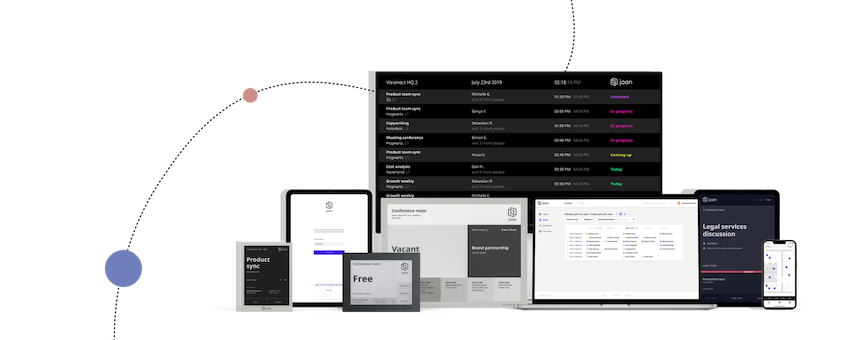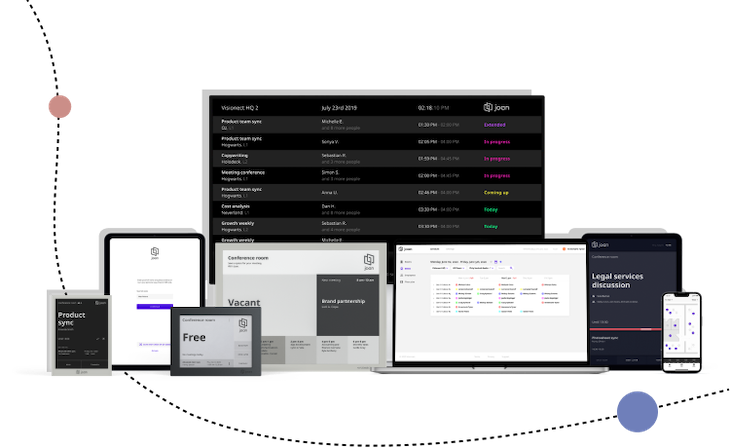What is an Integrated Workplace Management System (IWMS)?
In the quest for operational excellence, modern businesses are increasingly turning to Integrated Workplace Management Systems (IWMS).
These sophisticated software solutions integrate various aspects of facilities management, real estate portfolio management, and sustainability initiatives into a unified platform. By leveraging IWMS, organizations can streamline their operations, reduce costs, and improve overall workplace functionality.
What does IWMS stand for?
IWMS stands for Integrated Workplace Management System. It represents a comprehensive suite of software tools designed to manage various aspects of workplace infrastructure and resources.
Functionalities and examples of integrated workplace management system (IWMS)
An IWMS is a multifaceted software solution that integrates several core functionalities essential for effective workplace management. These functionalities include:
- Real estate management: Enables organizations to oversee and optimize their property assets, including lease management, space utilization, and strategic planning. For example, retail chains can optimize store locations based on customer demographics and sales data, while corporate offices can consolidate multiple buildings to reduce operational costs.
- Facility management: Automates maintenance workflows, service requests, and asset tracking to ensure facilities operate efficiently and sustainably. By streamlining maintenance operations and improving service request handling, organizations can reduce downtime and increase employee satisfaction.
- Space planning: Provides tools for space allocation, and occupancy planning, enhancing workplace flexibility and resource allocation. Optimizing office layouts to improve collaboration and productivity, as well as managing workspace allocations based on employee needs, are key benefits of space planning.
- Sustainability management: Monitors energy usage, environmental impact, and compliance with sustainability goals, supporting corporate responsibility initiatives. Tracking energy consumption to identify reduction opportunities and implementing recycling programs are examples of sustainability management practices enabled by an IWMS.
Initially developed as on-premises solutions, modern IWMS platforms are increasingly migrating to cloud-based architectures. This shift offers enhanced scalability, accessibility, and integration capabilities, empowering organizations to leverage real-time data and analytics for informed decision-making.
Within this landscape, Joan Workplace Experience stands out as a specialized solution offering targeted enhancements that seamlessly fit into the broader IWMS framework:
- Meeting room scheduling: Keeps your team on point and your meetings on track, eliminating double bookings and confusion.
- Desk booking: Simplified office logistics, ensuring every team member has the space they need, when they need it.
- Parking space booking: Real-time insights and option to reserve specific spots well in advance.
- Visitor management: Guaranteeing a smooth check-in and check-out process.
4 Benefits of integrated workplace management systems
Implementing an IWMS delivers a myriad of benefits that positively impact organizational efficiency and workplace satisfaction:
- Reduced costs: Detailed analytics enable organizations to make informed decisions about space planning and resource allocation, ensuring that every square foot of real estate contributes effectively to business objectives.
- Streamlined facility management processes: IWMS automates maintenance workflows, asset tracking, and service requests, significantly reducing administrative burden and enhancing operational efficiency. Facility managers can prioritize maintenance tasks based on real-time data insights, speeding up response times and minimizing downtime across facilities.
- Improved productivity: By providing seamless access to essential workplace services and amenities, IWMS enhances employee productivity and satisfaction, fostering a conducive work environment.
- Enhanced sustainability initiatives: IWMS platforms monitor energy consumption, waste management practices, and environmental impact metrics, enabling organizations to implement sustainable practices and achieve compliance with regulatory requirements.
You may also be interested in:
What to consider when implementing IWMS
Successful implementation of IWMS requires consideration of several key factors:
- Assessment of current workplace practices: Conduct a comprehensive assessment to identify areas for improvement and alignment with business strategies. Engage stakeholders across departments to ensure their input and buy-in throughout the implementation process.
- Define the challenges: Common challenges such as data security concerns, resistance to change, and integration complexities may arise during IWMS implementation. Organizations must proactively address these challenges by conducting thorough user training programs.
- Compatibility with existing IT infrastructure: Evaluate the system’s compatibility with existing IT infrastructure to ensure seamless integration and minimal disruption. Prioritize user-friendly interfaces to facilitate adoption across the organization and plan for comprehensive training programs to empower employees.
Choosing a IWMS solution
The market is brimming with a variety of IWMS providers, each offering their own unique blend of services. From managing fleets and facilities to overseeing equipment and real estate, these solutions cater to a wide range of needs.
Some providers go the extra mile, incorporating IoT and AI to deliver detailed analytics and enhanced functionality—but be prepared for a potentially hefty price tag.
When choosing your IWMS solution, consider these questions to help narrow down your decision:
- Which IWMS features are most critical for our needs?
- How scalable is the IWMS solution?
- What is the total cost of ownership?
- Is the IWMS user-friendly and intuitive?
- What kind of support and training does the vendor provide?
- How secure is the IWMS solution?
- What are the vendor’s track record and reputation?
Embrace integrated management solutions
As businesses continue to evolve, leveraging IWMS capabilities will be instrumental in navigating challenges, achieving operational excellence, and maintaining a competitive edge in the marketplace.
For organizations seeking to enhance their workplace management strategies, exploring IWMS solutions offers a pathway to sustainable growth, improved resource utilization, and enhanced employee experiences.
Contact us today to discover how our market-proven solutions can upgrade your workplace management.
You may also be interested in:
How can Joan help companies create more intelligent workplaces?
Joan can be a key player in transforming a company’s workspace into an intelligent one by focusing on a crucial aspect: smart room booking and space management. Here’s how Joan contributes to intelligent workplaces.
Room Booking: By providing room booking solutions, Joan enables efficient utilization of meeting spaces, reducing scheduling conflicts and improving overall workplace productivity.



